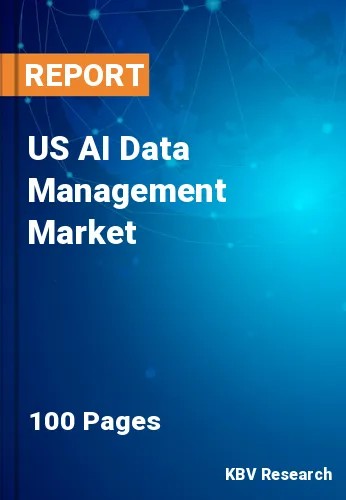Chapter 1. Market Scope & Methodology
1.1 Market Definition
1.2 Objectives
1.3 Market Scope
1.4 Segmentation
1.4.1 US AI Data Management Market, by Deployment Mode
1.4.2 US AI Data Management Market, by Offering
1.4.3 US AI Data Management Market, by Technology
1.4.4 US AI Data Management Market, by Application
1.4.5 US AI Data Management Market, by Data Type
1.4.6 US AI Data Management Market, by Vertical
1.5 Methodology for the research
Chapter 2. Market Overview
2.1 Introduction
2.1.1 Overview
2.1.1.1 Market Composition and Scenario
2.2 Key Factors Impacting the Market
2.2.1 Market Drivers
2.2.2 Market Restraints
2.2.3 Market Opportunities
2.2.4 Market Challenges
2.2.5 Market Trends
2.3 Porter’s Five Forces Analysis
Chapter 3. US AI Data Management Market
3.1 US AI Data Management Market by Deployment Mode
3.2 US AI Data Management Market by Offering
3.3 US AI Data Management Market by Technology
3.4 US AI Data Management Market by Application
3.5 US AI Data Management Market by Data Type
3.6 US AI Data Management Market by Vertical
Chapter 4. Company Profiles – Global Leaders
4.1 Microsoft Corporation
4.1.1 Company Overview
4.1.2 Financial Analysis
4.1.3 Segmental and Regional Analysis
4.1.4 Research & Development Expenses
4.1.5 Recent strategies and developments:
4.1.5.1 Partnerships, Collaborations, and Agreements:
4.1.5.2 Acquisition and Mergers:
4.1.6 SWOT Analysis
4.2 IBM Corporation
4.2.1 Company Overview
4.2.2 Financial Analysis
4.2.3 Regional & Segmental Analysis
4.2.4 Research & Development Expenses
4.2.5 Recent strategies and developments:
4.2.5.1 Product Launches and Product Expansions:
4.2.5.2 Acquisition and Mergers:
4.2.6 SWOT Analysis
4.3 Amazon Web Services, Inc. (Amazon.com, Inc.)
4.3.1 Company Overview
4.3.2 Financial Analysis
4.3.3 Segmental Analysis
4.3.4 Recent strategies and developments:
4.3.4.1 Partnerships, Collaborations, and Agreements:
4.3.5 SWOT Analysis
4.4 Google LLC (Alphabet Inc.)
4.4.1 Company Overview
4.4.2 Financial Analysis
4.4.3 Segmental and Regional Analysis
4.4.4 Research & Development Expense
4.4.5 Recent strategies and developments:
4.4.5.1 Partnerships, Collaborations, and Agreements:
4.4.5.2 Product Launches and Product Expansions:
4.4.6 SWOT Analysis
4.5 Oracle Corporation
4.5.1 Company Overview
4.5.2 Financial Analysis
4.5.3 Segmental and Regional Analysis
4.5.4 Research & Development Expense
4.5.5 Recent strategies and developments:
4.5.5.1 Partnerships, Collaborations, and Agreements:
4.5.6 SWOT Analysis
4.6 Salesforce, Inc.
4.6.1 Company Overview
4.6.2 Financial Analysis
4.6.3 Regional Analysis
4.6.4 Research & Development Expense
4.6.5 Recent strategies and developments:
4.6.5.1 Partnerships, Collaborations, and Agreements:
4.6.5.2 Acquisition and Mergers:
4.6.6 SWOT Analysis
4.7 SAP SE
4.7.1 Company Overview
4.7.2 Financial Analysis
4.7.3 Segmental and Regional Analysis
4.7.4 Research & Development Expense
4.7.5 Recent strategies and developments:
4.7.5.1 Acquisition and Mergers:
4.7.6 SWOT Analysis
4.8 Hewlett Packard Enterprise Company
4.8.1 Company Overview
4.8.2 Financial Analysis
4.8.3 Segmental and Regional Analysis
4.8.4 Research & Development Expense
4.8.5 Recent strategies and developments:
4.8.5.1 Acquisition and Mergers:
4.8.6 SWOT Analysis
4.9 Snowflake, Inc.
4.9.1 Company Overview
4.9.2 Financial Analysis
4.9.3 Regional Analysis
4.9.4 Research & Development Expenses
4.9.5 SWOT Analysis
4.10. Teradata Corporation
4.10.1 Company Overview
4.10.2 Financial Analysis
4.10.3 Regional Analysis
4.10.4 Research & Development Expense
4.10.5 Recent strategies and developments:
4.10.5.1 Acquisition and Mergers:
4.10.6 SWOT Analysis

